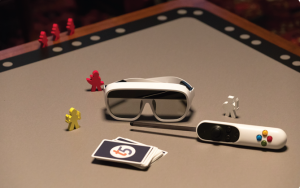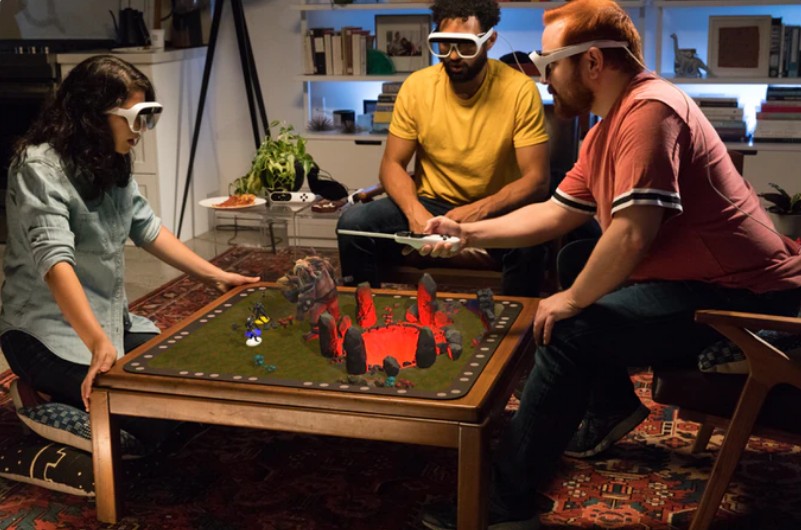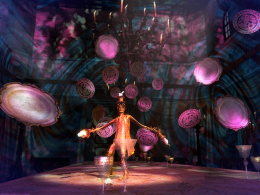With their new AR glasses, Tilt Five wants to make board games even more exciting through augmented reality. The start-up around former CastAR developers has now launched the project on Kickstarter for crowdfunding.
Board games, parlour games and tabletops are on the rise again. The market is getting bigger and bigger, social interaction while playing and also the physical, tactile component is often important for gamers. However, digitalisation does not stop at the gaming table - board games that outsource parts of the game mechanics to associated apps or enrich the game experience with app-supported music, sound effects and voice output are becoming more and more common. But now it goes even further.
Gaming Holodeck - solo or with friends
Designed is Startup Tilt Five on single-player and multiplayer games at the home gaming table. For this purpose, it comes with some basic games, including car racing arcade, small shooter games and skill puzzlers developed in-house. However, games in which not all participants sit at the same table are also to be supported: Via the Internet, it will also be possible to project the game states of other players into one's own glasses, so that people can play together at a distance. If you don't have your own glasses, you can also substitute a smartphone or tablet.
In addition, there are games from third-party providers that work together with Tilt Five. Among them are Gladiabotswhich combines sci-fi action with logic puzzles and programming elements, as well as Towerland. As a project partner is also Fantasy Grounds one of the largest providers of virtual game environments for tabletop and role-playing systems such as Dungeons&Dragons, Pathfinder or Call of Cthulhu.
How does Tilt Five work?
The core of the system is a pair of AR glasses with two cameras and mini HD projectors (720p resolution) that project 3D images calculated by the external computing unit (computer or smartphone) onto the lenses of the glasses. This provides a 110-degree field of view diagonal. A microphone and stereo speakers are also built in.
In addition, there is a handheld controller called Wand, which one of the cameras in the glasses recognises via infrared. The glasses are connected via USB to a computer or smartphone, which takes over the computing power of the AR software. As a result, the glasses themselves only weigh around 85 grams (the CastAR predecessor was bulky by comparison), but you have a cable around your neck - literally.
The game is played on an 80 by 80 centimetre board that is simply a reflective surface. The head-tracking camera of the glasses recognises this surface via infrared and projects the appropriate images to the appropriate place on the glasses - calculated by the USB-connected device. Optionally, the board can be extended to a good metre in edge length - for an additional charge. In addition, there is a so-called computer vision camera: this recognises not only the wall controller but also, for example, playing cards with QR codes or the hands of the players, thus enabling interaction with the "holograms".

Kickstarter crowdfunding underway
Tilt Five has been on Kickstarter since 24 September 2019 and is seeking support. The first deliveries are expected in June 2020 if the project is successful. For the time being, the glasses will only work with Windows and Android devices, but support for other operating systems is planned.
The cheapest backer level starts at 299 dollars and includes a pair of glasses, a wall, a game board, accessories and the first games. A three-pack is available for 859 dollars. All backer levels also include access to the Tilt-Five SDK, which allows software tinkerers to create their own content for the AR environment.
Source: t3n / Kickstarter / Youtube









